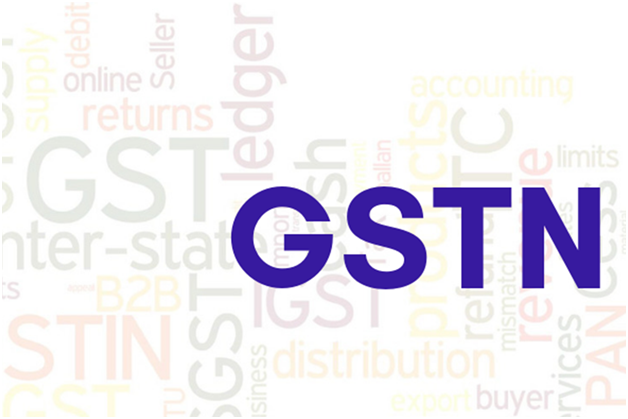Goods and Service Tax (GST) is an indirect comprehensive tax on the supply of goods and services. The GST reform is widely regarded as one of the largest tax reforms in the country. Like many campaigns that the government has launched, GST is one such improvement that is assumed to bring about development and growth in the nation. GST is called a ‘comprehensive’ tax primarily because it was brought into effect to bring all the indirect taxes under one roof.
With the introduction of GST, earlier indirect taxes such as Central Sales Tax, Central Excise Duty, Service tax, VAT, Entertainment Tax, Luxury Tax, Purchase tax, etc., were subsumed under one single tax, the GST. India has adopted a dual GST model, which means that the GST would be administered by both the Central and the State Governments.
What is GST Network?
The backbone of this system of tax collection is the GST Network. The indirect tax structure was very complicated since there were numerous indirect taxes at different levels. With the introduction of GST, the structure has now become a lot more simple and efficient allowing a much better administration. The GST Network refers to the Information Technology network that provides the computing resources to power the entire system of tax collection and filing required by the GST system. It is maintained by the National Informatics Center. The GST Network is the interface between the taxpayers and the government and it is entirely digital.
Chief features of the GST Network:
● Reliability
The GST Network is considered to be a trusted National Information Utility (NIU). This implies that the network is in charge of providing reliable, sound, as well as, efficient IT infrastructure and information passing. It is essentially a channel of communication for the government and the business taxpayers online.
● Security Information
The central government holds a major share of the GST network as compared to any other individual player and it would be a necessary step in order to keep the information about the taxpayers safe and secure. To ensure confidentiality, the GSTN has set protocols that permit access only to the taxpayer and the tax officer. The only information that is available to any business is what they communicate to or receive from the GST network. It is tracked based on the GSTIN.
● Payment:
The GST Network has enabled the online payment of GST. One of the biggest benefits of GST is the convenience of being able to make GST payment online, especially for small businesses. This online method is much more efficient and quick for everyone rather than an offline payment.
● Complex transactions:
GST is a tax that depends on the destination from where it is collected. The GST network is also in charge of calculating and settling the Integrated GST (IGST) along with the Input Tax Credit (ITC). The computation of IGST can be a tiresome task recognizing the volume of the transactions that happen all over the country. For a strong flow between SGST and CGST, there is a dire need for a strong managing body like GST Network.
The impact of GST on Real Estate
The introduction of the GST reform led to vital changes in all sectors, including real estate. The real estate sector plays a very crucial role in the formation of the country’s economy. Hence, GST’s impact on real estate is also crucial because it will affect you in some or the other way. It covers residential housing, commercial offices, and retail outlets and trading spaces. Being one of the most significant sectors of the Indian economy, it accounts for 6-8% of its GDP. Hence, GST’s impact on real estate is noteworthy.
- The real estate sector was facing a lot of adversities. Hence, in 2019, the GST council came up with new rates for the housing units that were applicable from April 1st. Therefore, GST’s impact on real estate was significant. It stated that GST would be levied at an effective rate of 5% without ITC on residential properties outside the affordable segment, and at an effective GST of 1% without ITC on affordable housing properties. Moreover, It also decided that the under-construction projects will have an option to shift to the new rate.
- GST’s impact on real estate because of the above-stated change could be that a reduced GST rate of 5% and 1% as stated above is offered without the ability for builders to take the input tax credit. This could, therefore, lead to the escalation of costs.
- The second major change brought about was that 80% acquisition of materials should be from a registered dealer. It also declared that up to 15% of commercial space to be operated as residential property for GST purposes. GST’s impact on real estate is that the chief raw materials of construction such as stone, brick, hardware, etc majorly come from unorganized sectors. Hence, fulfilling the condition of 80% acquisition from a registered dealer in order to obtain concessional GST rates could prove to be challenging, especially in small cities.
- The council also declared that the reversal of input tax credit was to be done on a proportionate basis and the time limit for the transition to new rates will be discussed with the states.
- Therefore, GST’s impact on real estate because of the reversal of input tax credit on a proportional basis is that there would surely be certain computational issues for the builders. Mainly due to the fact that each construction project would be in various different stages of production.
- Another factor that might deter investments in this area is the complicated and tiresome process of calculating GST and the confusion that is very frequently linked with the same.
Therefore, we can conclude by saying that GST’s impact on real estate is in some ways positive as well as negative.








